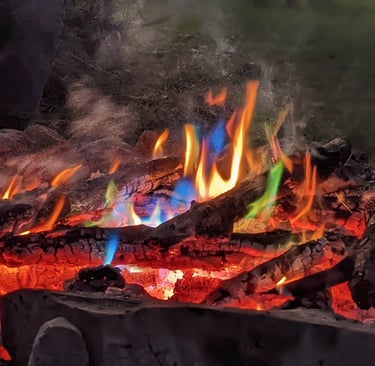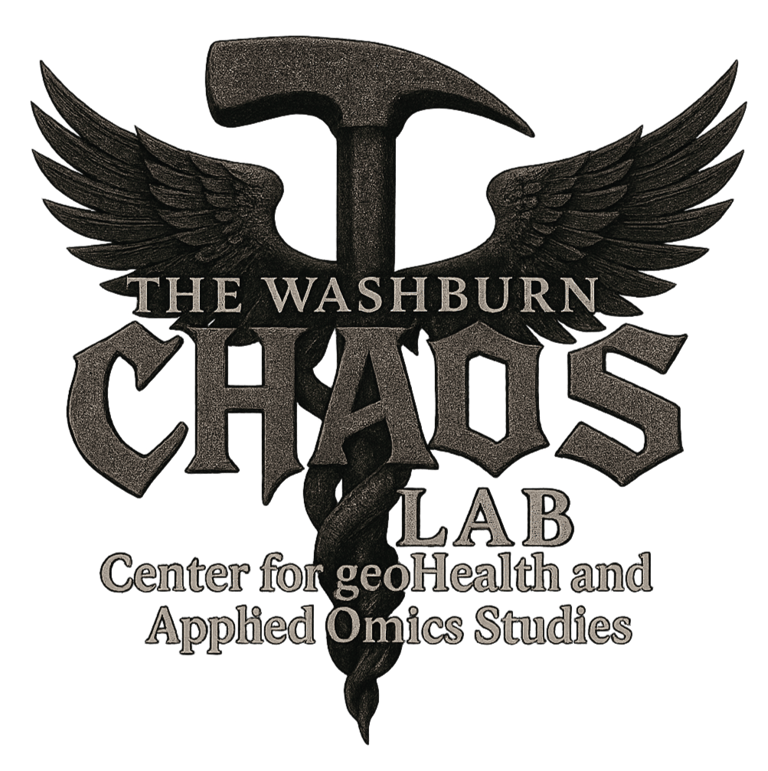When Mother Nature Turns Up the Heat and Microbes Get Weird
If you’re into flying microbes, flaming ecosystems, and the kind of science that sounds like it belongs in a metal album—The Microbiology of Wildfires by Dr. Kanika Khanna is your jam. This Chaos Lab Research Feature breaks down how wildfires torch soil microbes, launch airborne spores, and spark a whole new field: pyroaeromicrobiology. If fire, fungi, and airborne bio-chaos sound like your vibe, buckle up.
RESEARCH FEATUREPYROAEROMICROBIOLOGYEXTREME ECOSYSTEMSNATURAL DISASTERS
6/18/20253 min read
You ever wake up to an apocalyptic orange sky and think, “What’s cooking?” In California and Oregon circa September 2020, it wasn’t breakfast—it was the planet. And while everyone else was doom-scrolling and taking fire-sky selfies, scientists were asking: What the hell happens to microbes when the world burns?
Spoiler alert: A lot.
This week’s Chaos Lab Research Feature goes out to the unsung heroes (and villains) of wildfire science: the microbes. We’re talking about the little guys living in the dirt and the ones hitching a ride in wildfire smoke like it’s a hot Uber straight to your lungs.
We’re breaking down “The Microbiology of Wildfires” by Kanika Khanna, Ph.D. (Gladstone Institute of Virology, April 16, 2021)—a firecracker of a read published by the American Society for Microbiology that dives headfirst into soil chaos, airborne spores, and why fire turns the microbial world into a full-blown bio-thriller.
Let’s break this paper down like it’s fire season and our PCR plates are melting.
🔥 Microbes in the Ash Pit (Soil Microbiota Edition)
Wildfires don’t just roast trees—they cook the ground. Surface temps can spike over 1000°C. That’s lava levels of hot. You know what doesn’t love lava? Topsoil microbes. Especially fungi. Bacteria in deeper soil layers do a little better (because bacteria are basically nature’s cockroaches), but even they feel the burn.
Turns out, after a fire, the microbial cast of characters changes dramatically. A few notable fire-favoring freaks rise from the ashes—like Massilia, Arthrobacter, Penicillium, and Fusicladium. These taxa take the charred stage while others vanish like last week’s gel results.
And don’t expect things to bounce back overnight. Recovery is glacial. We’re talking years of soil funk, chemical chaos, and microbiome reformation that depends heavily on how hot things got and how deep the burn reached. TL;DR: Fire leaves a microbial crater.
🌫️ Pyroaeromicrobiology: Yeah, That’s a Word Now
Welcome to the world of pyroaeromicrobiology—yes, it's a mouthful and yes, it's awesome. It’s the study of what lives in wildfire smoke, and spoiler: smoke is not just a cocktail of ash and regret. It's teeming with viable microbes.
We're talking spores, bacteria, and full-on airborne microbial stowaways, launched skyward in flaming plumes and shielded by particulates that block out UV death rays. Think microbial Mad Max but make it airborne.
Controlled burn studies (like those by Moore et al. 2020) found up to five times more microbes in smoke than in normal air, with ~80% still viable. That’s not just "alive," that’s "could absolutely set up shop in your lungs" alive. The CDC even lists valley fever as a risk for wildland firefighters thanks to aerosolized fungi doing donuts in the smoke spiral.
💥 Why This Matters (Besides the Obvious Doom)
With climate change throwing gasoline on fire season, wildfires aren’t going anywhere. And while trees and wildlife get the headlines, microbes are pulling the strings behind the scenes—altering ecosystems, shifting soil recovery timelines, and hitchhiking across the globe in plumes of biohazard fluff.
We need more studies, better models, and global collaboration. But since we can’t exactly schedule a wildfire for data collection (and recreating it in a lab is, well, spicy), the field’s still young and feral.
But that's where the chaos lives. And we’re here for it.
🧪 TL;DR: The Chaos Lab Take
Fire nukes soil microbiomes, and the survivors are weird.
Smoke isn't sterile—it’s a microbe rave.
Wildfire microbiology is a science frontier where ecology, atmospheric science, and biosecurity collide.
Your lungs are not ready.
Stay tuned for more chaotic science deep dives. Until then, remember: In the CHAOS Lab, we don’t just study disaster. We invite it to the party and ask it what it’s made of.
Want the full nerdy read? Check out the original ASM article here: The Microbiology of Wildfires


When the world burns, the microbes take flight—welcome to pyroaeromicrobiology, baby.
